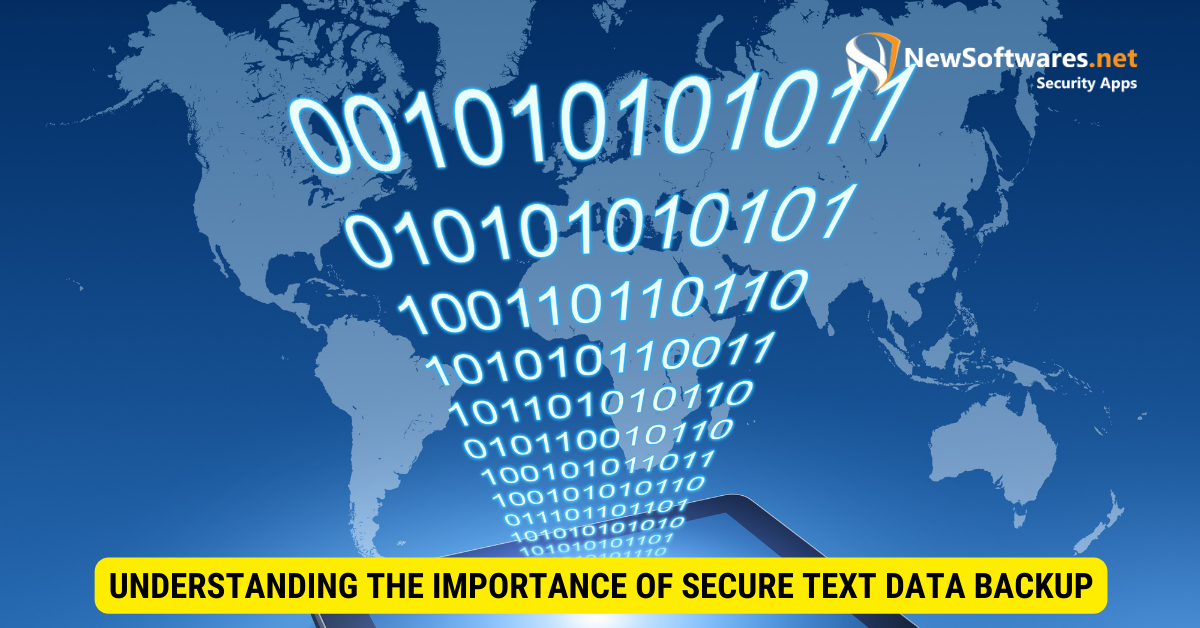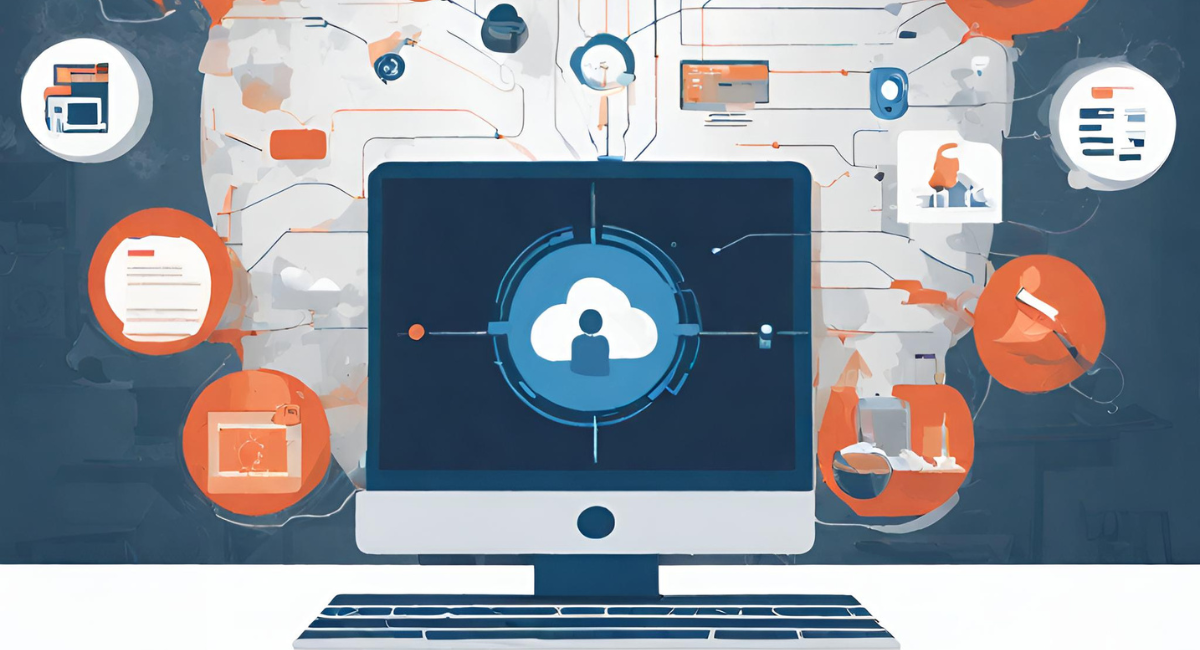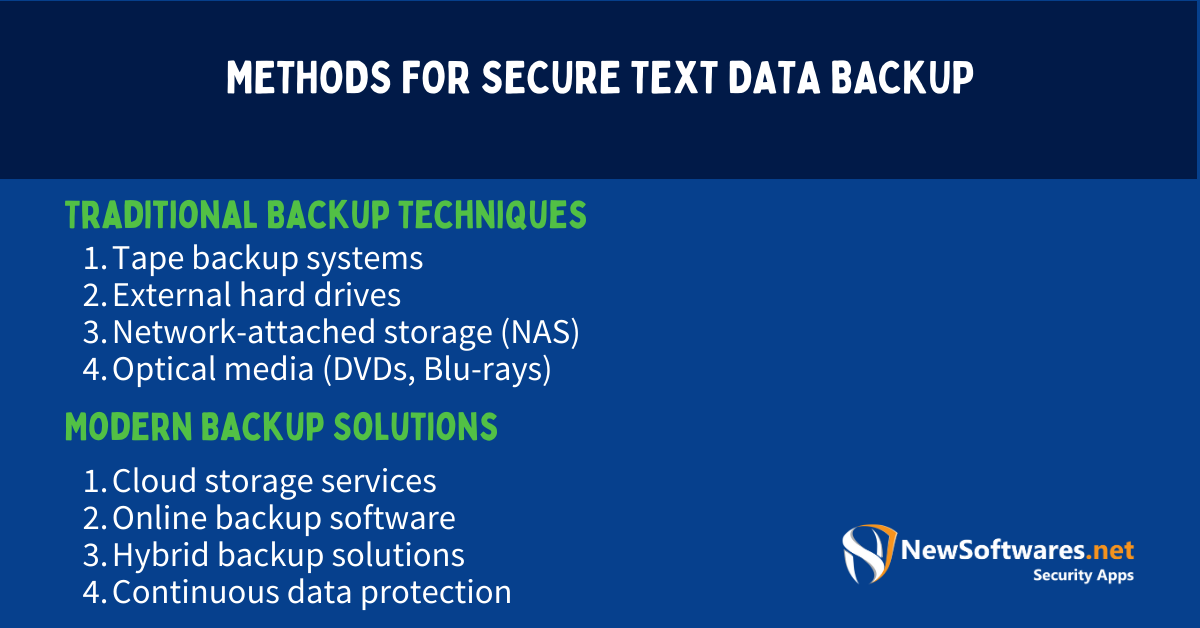Text data can be securely backed up using encryption and secure storage solutions.
In today’s digital age, text data plays a crucial role in our private and professional lives. From important documents and emails to valuable intellectual property, the information we store in text format is invaluable. However, with the growing number of cyber threats and data breaches, safeguarding the security of our text data has become a pressing concern.
Understanding the Importance of Secure Text Data Backup

Before delving into the methods and techniques used for secure text data backup, it is essential to comprehend the significance of safeguarding this information. Text data forms the cornerstone of digital communication and knowledge management. From text messages and social media posts to spreadsheets and reports, our lives and businesses revolve around text-based information.
Moreover, text data often contains sensitive and confidential details that require protection from unauthorized access and potential loss. Any compromise in the security of text data can have far-reaching consequences, ranging from financial losses and lawsuits to reputational damage and loss of trust.
The Role of Text Data in Today’s Digital Age
Text data plays a pivotal role in facilitating communication and information sharing. It enables us to convey thoughts, ideas, and instructions precisely and clearly. From business negotiations and legal agreements to personal correspondence and creative expression, text data is the lifeblood of our digital interactions.
Imagine a world without text data. Communicating effectively, sharing knowledge, or even expressing ourselves would be challenging. Text data allows us to document our experiences, record historical events, and preserve cultural heritage. It is the foundation upon which our digital society is built.
Furthermore, text data is not limited to just written words. It encompasses many formats, including emails, articles, blog posts, and academic papers. Each piece of text data contributes to the vast pool of human knowledge, enabling progress and innovation in various fields.
Why Secure Backup Matters
A secure text data backup ensures that our valuable information remains intact and retrievable even in the face of unforeseen events like hardware failures, natural disasters, or cyber-attacks. Without a reliable backup system, we risk losing critical data that is difficult or impossible to replace.
Consider the scenario where a business relies heavily on text data. Without a secure backup, a hardware failure could result in losing important customer records, financial data, and operational documents. The consequences could be devastating, leading to financial instability, legal issues, and a loss of customer trust.
Furthermore, the importance of secure backup extends beyond businesses. For individuals, losing personal text data such as cherished memories captured in messages or important documents like resumes and academic papers can be emotionally distressing and professionally damaging.
By implementing a secure backup system, we can mitigate the risks associated with data loss. Regularly backing up text data ensures that even in the worst-case scenario, such as a cyber-attack or natural disaster, we can restore our information and continue our digital lives without significant disruption.
In conclusion, the importance of secure text data backup cannot be overstated. Both businesses and individuals must prioritize the protection of their text-based information. By understanding the role of text data in our digital age and recognizing the potential consequences of data loss, we can take proactive measures to safeguard our valuable information through secure backup systems.
The Nature of Text Data
Text data is a fundamental component of the digital world, encompassing a wide range of information stored or encoded in a textual format. It goes beyond words on a page, from simple text files and emails to more complex documents such as PDFs, Word files, and databases.
Defining Text Data
Text data refers to information represented using characters, symbols, and words. It is the cornerstone of communication and knowledge sharing in the digital age. From ancient manuscripts to modern electronic documents, text data has been vital for recording and transmitting information across generations.
Text data is not limited to any specific domain or industry. It is ubiquitous and can be found in various contexts, including literature, journalism, business, science, and technology. Whether it’s a classic novel, a scientific research paper, or a simple email, text data forms the basis of human expression and information exchange.
Common Types of Text Data
Text data comes in various forms, each serving an exclusive purpose and catering to different needs. Some common types of text data include:
- Text documents and reports: These encompass a broad range of textual information, such as articles, essays, research papers, and official reports. They provide a structured and organized way to present ideas, findings, and arguments.
- Emails and chat conversations: In today’s interconnected world, electronic communication is vital. Emails and chat conversations are a prevalent form of text data, facilitating real-time communication and collaboration.
- Spreadsheets and financial records: Text data is not limited to narrative content. It also includes structured data, such as financial records stored in spreadsheets. These documents contain textual information in labels, numbers, and formulas.
- Website content and blog posts: The internet is teeming with textual information in the form of website content and blog posts. From news articles to educational resources, these texts provide valuable insights and knowledge to online users.
- Source code and programming scripts: Text data is not exclusive to human consumption. It is also the foundation of computer programming. Source code and programming scripts are written in text-based languages, enabling software development and automation.
These are just a few examples of the diverse range of text data in our digital landscape. From the written word to the code that powers our technology, text data is integral to our daily lives.
Threats to Text Data Security
Text data is crucial in today’s digital world, encompassing everything from personal messages to sensitive business information. However, with the increasing reliance on technology, the risks and vulnerabilities associated with text data security have become more prevalent and sophisticated. Understanding these potential threats is essential to ensure text data’s integrity and confidentiality.
Potential Risks and Vulnerabilities

Securing text data requires a comprehensive approach considering the various risks and vulnerabilities that can compromise its confidentiality and integrity. Let’s explore some of the common threats to text data:
- Malware and Ransomware Attacks: Malicious software, such as viruses, worms, and ransomware, pose a significant threat to text data. These attacks can encrypt or delete important text files, rendering them inaccessible or permanently lost.
- Data Breaches and Unauthorized Access: Unauthorized individuals gaining access to text data can lead to severe consequences. Data breaches can occur due to weak passwords, phishing attacks, or vulnerabilities in software systems, exposing sensitive information to unauthorized parties.
- Physical Damage or Loss of Storage Devices: Text data stored on physical devices, such as hard drives, USB drives, or printed documents, can be susceptible to physical damage or loss. Accidental spills, fires, or theft can result in the permanent loss of text data.
- Human Error or Accidental Deletion: Mistakes happen, and human error can lead to the accidental deletion or modification of text data. Whether it’s an unintentional keystroke or improper handling of files, these errors can result in the loss or corruption of critical information.
Consequences of Insecure Text Data
The consequences of inadequate text data security can severely impact individuals and organizations. Let’s explore some of the potential consequences that can arise from insecure text data:
- Identity Theft and Financial Fraud: If sensitive personal or financial information falls into the wrong hands, it can be exploited for identity theft or fraud. This can lead to significant monetary loss and emotional distress for the individuals affected.
- Legal Liabilities and Regulatory Penalties: In many jurisdictions, organizations are legally obligated to protect the privacy and security of text data. Failure to do so can result in legal liabilities and regulatory penalties, including fines and reputational damage.
- Damage to Brand Reputation and Customer Trust: A data breach or unauthorized disclosure of text data can severely damage an organization’s brand reputation and erode customer trust. It can take years to rebuild trust once it has been compromised.
- Intellectual Property Theft and Competitive Disadvantages: Text data often contains valuable intellectual property, such as trade secrets, proprietary algorithms, or research findings. If this information is stolen or leaked, it can give competitors an unfair advantage and undermine an organization’s competitive position.
Given the potential risks and consequences associated with insecure text data, individuals and organizations must implement robust security measures to protect their information. This includes encryption, regularly backing up data, training employees on best practices, and staying updated on security threats and solutions.
Methods for Secure Text Data Backup

Traditional Backup Techniques
Traditional backup techniques involve periodically creating copies of text data and storing them in separate physical locations. Common traditional backup methods include:
- Tape backup systems
- External hard drives
- Network-attached storage (NAS)
- Optical media (DVDs, Blu-rays)
Modern Backup Solutions
Modern backup solutions leverage cloud technology to provide convenient and secure text data backup options. These include:
- Cloud storage services
- Online backup software
- Hybrid backup solutions
- Continuous data protection
Evaluating the Security of Your Text Data Backup
Key Indicators of a Secure Backup
When evaluating the security of your text data backup, consider the following key indicators:
- Encryption: Ensure data is encrypted during transmission and at rest.
- Authentication and access controls: Implement strong authentication mechanisms and strict access controls.
- Redundancy and disaster recovery: Have redundant copies of your backups and a robust disaster recovery plan.
- Regular testing and monitoring: Regularly test the integrity of backups and monitor for unauthorized activities.
Regular Audit and Update of Backup Security
Backup security is not a one-time task. It requires continuous monitoring and periodic auditing to ensure your backup system remains resilient against evolving threats. Regularly update your backup security practices to align with industry best practices.
Key Takeaways
- Always encrypt text data before backing it up.
- Use trusted and secure backup solutions, whether cloud-based or physical.
- Regularly update and test backups to ensure data integrity.
- Multi-factor authentication adds an extra layer of security to backup solutions.
- Always have multiple backup copies in different locations for redundancy.
FAQs
Q: What encryption methods can I use for text data?
A: Options include AES, RSA, or software solutions like VeraCrypt and BitLocker.
Q: How often should I back up my text data?
A: It depends on its importance and how frequently it changes. Daily or weekly backups are common for crucial data.
Q: Are cloud backups for text data safe?
A: With reputable providers and encryption, yes. But always ensure you know the provider’s security measures.
Q: Can I automate text data backups?
A: Yes, many backup software and services offer automation options.
Q: What if my backup gets corrupted?
A: Having multiple backup copies helps mitigate risks. If one fails, others can be a fallback.
Conclusion
In conclusion, the security of text data backup is paramount in today’s digital landscape. By understanding the nature of text data, identifying potential threats, and implementing secure backup techniques, individuals and organizations can ensure the resilience and confidentiality of their valuable information
